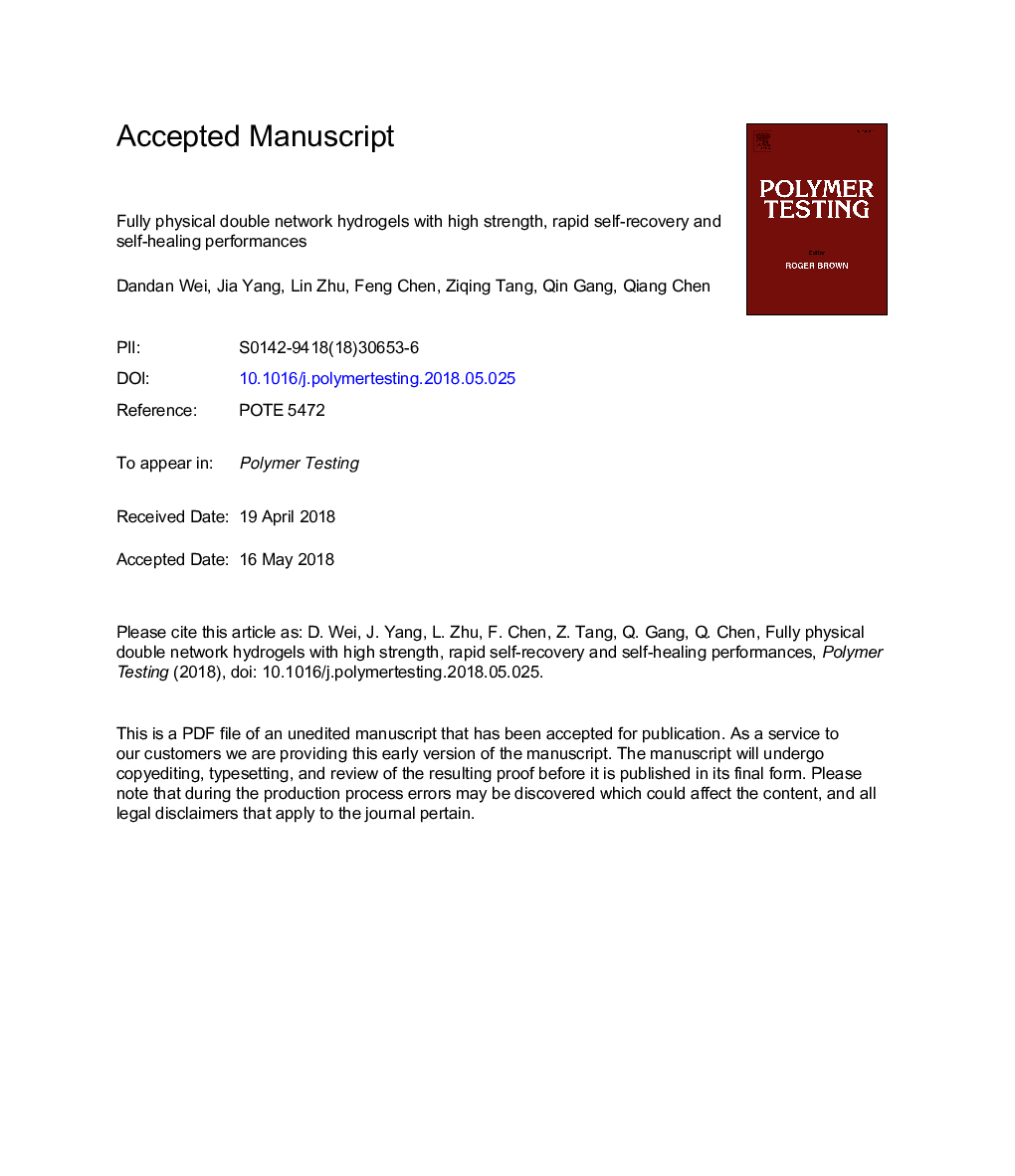| Article ID | Journal | Published Year | Pages | File Type |
|---|---|---|---|---|
| 7824672 | Polymer Testing | 2018 | 19 Pages |
Abstract
Double network hydrogels (DN gels) are one of most extensively investigated high strength hydrogels. However, conventional DN gels are fully chemically cross-linked, which often suffer from severe softening phenomenon and are lack of self-healing properties. In the present work, fully physically cross-linked Agar/PAAm DN gels, consisting of physical agar gel as the first network and physical polyacrylamide (PAAm) gel as the second network, were prepared by the “one-pot” method, in which both of the networks are cross-linked by hydrogen bonds. It was found hydrogen-bonds cross-linked and highly mechanical PAAm physical single network (SN) gel as well as Agar/PAAm physical DN gel were only achieved at a high AAm concentration (i.e. 50â¯wt%). At optimal condition, Agar/PAAm physical DN gel achieved E of 498â¯kPa, Ïf of 0.48â¯MPa, εf of 24.11â¯mm/mm and W of 10.24â¯MJ/m3, which was much better than those of PAAm physical SN gel (E of 355â¯kPa, Ïf of 0.24â¯MPa, εf of 23.3â¯mm/mm and W of 5.82â¯MJ/m3). Both of Agar/PAAm physical DN gel and PAAm physical SN gel exhibited large hysteresis loops. Agar/PAAm physical DN gels also demonstrated rapid self-recovery (â¼83% toughness recovery for 2â¯min resting) at room temperature without external stimuli. Different from Agar/PAAm hybrid DN gels with negligible self-healing property, Agar/PAAm physical DN gels exhibited obvious self-healing property, and the healed gel could achieve tensile strength of 0.38â¯MPa (healing efficiency â¼75%) and tensile strain of 420%. Combination with high strength, rapid self-recovery, and self-healing performances, fully physical Agar/PAAm DN gels hold promising for potential bio-applications under physiological conditions.
Related Topics
Physical Sciences and Engineering
Chemistry
Organic Chemistry
Authors
Dandan Wei, Jia Yang, Lin Zhu, Feng Chen, Ziqing Tang, Gang Qin, Qiang Chen,
